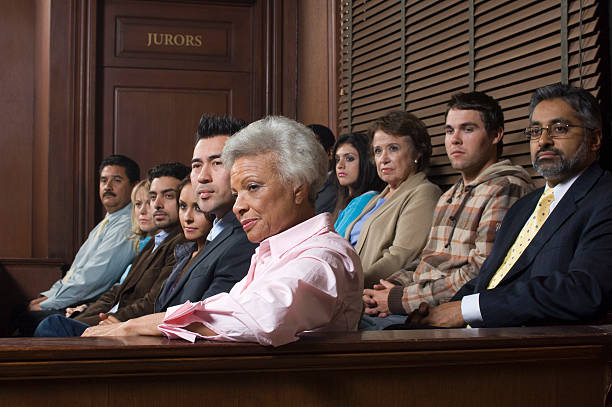The Comprehensive Guide to the Wisconsin Court System
 The Wisconsin Court System is one of the most important parts of making sure that the state is fair and just. It has a long past that goes back to the early days of Wisconsin as a state. There are different courts in this system, and each one has its own part and duty.
The Wisconsin Court System is one of the most important parts of making sure that the state is fair and just. It has a long past that goes back to the early days of Wisconsin as a state. There are different courts in this system, and each one has its own part and duty.
Most cases are heard by the Circuit Courts, but the famous Supreme Court makes sure that laws are always interpreted the same way. But besides these well-known groups, there are many other daily tasks and activities that make sure justice is done quickly and properly.
In this article, we will discuss how this system works and how dedicated the people who work in it are. This can be learned by breaking it down into its parts. Let's learn more about this important organization together.
Introduction to the Court System
The Wisconsin Court System has its foundational roots dating back to 1848 when Wisconsin was officially recognized as a state. This system is composed of multiple levels, each with distinct roles and responsibilities, these are:
- Supreme Court of Wisconsin
- Court of Appeals
- Circuit Courts
Historical records indicate the evolution and adaptation of this system over the years, addressing challenges such as increasing caseloads or changes in the legal landscape.
Statistical data from the state's judiciary show that annually, the Circuit Courts handle hundreds of thousands of cases, ranging from minor disputes to severe criminal offenses.
In terms of administration, the Wisconsin Court System is overseen by the Wisconsin Supreme Court, ensuring standards and procedures are consistent across all courts.
This hierarchical structure and the clear division of responsibilities are essential to ensure the system's efficiency and the fair administration of justice.
Understanding the Structure
The Wisconsin Court System is structured in distinct layers, each with its specific role. We'll now go over what each court does and why it matters.
Circuit Courts
The Circuit Courts are the primary trial courts in Wisconsin. These courts deal with a wide variety of legal matters, from criminal cases to civil disputes.
Each county in Wisconsin has at least one Circuit Court, and these courts are divided into branches, ensuring that local issues are handled locally.
These courts also have specialized branches, each focused on a specific type of case. For instance:
Family Court
Handles cases related to family issues. Cases like child support disputes, divorce proceedings, or custody battles.
Juvenile Court
It handles cases where individuals under 18 have committed offenses. The main aim? Rehabilitation and guidance, rather than punishment.
Probate Court
Manages the assets and wills of people who have passed away and oversees the care of minors or adults who can't care for themselves. It ensures assets are transferred correctly and that the right people take responsibility for those who need care.
Small Claims Cases
For civil cases involving smaller amounts of money (as determined by state law), these are typically processed in a special small claims division.
Court of Appeals
If someone isn’t satisfied with the outcome of their Circuit Court case, they can take it up a notch to the Court of Appeals. These courts exist to review decisions made by the Circuit Courts, ensuring that laws are applied correctly and justice is served.
Wisconsin has four appellate districts, and the Court of Appeals stands as a crucial checkpoint before reaching the pinnacle, the Supreme Court.
District I: Located in Milwaukee, this district primarily serves the counties of Milwaukee.
District II: This district is based in Waukesha and encompasses Calumet, Fond du Lac, Green Lake, Kenosha, Manitowoc, Ozaukee, Racine, Sheboygan, Walworth, Washington, and Winnebago counties.
District III: Located in Wausau, this district covers the northern and central parts of Wisconsin. The counties it serves include Ashland, Barron, Bayfield, Brown, Buffalo, Burnett, Chippewa, Door, Douglas, Dunn, Eau Claire, Florence, Forest, Iron, Kewaunee, Langlade, Lincoln, Marathon, Marinette, Menominee, Oconto, Oneida, Outagamie, Pepin, Pierce, Polk, Price, Rusk, Sawyer, Shawano, St. Croix, Taylor, Trempealeau, Vilas, and Washburn.
District IV: Based in Madison, District IV includes Adams, Clark, Columbia, Crawford, Dane, Dodge, Grant, Green, Iowa, Jackson, Jefferson, Juneau, La Crosse, Lafayette, Marquette, Monroe, Portage, Richland, Rock, Sauk, Vernon, Waupaca, Waushara, and Wood counties.
Supreme Court
The Wisconsin Supreme Court is the highest appeal court in the state, meaning it's the top tier in the hierarchy of the judicial system.
Composition:
The Wisconsin Supreme Court consists of seven justices, including a Chief Justice. These justices are elected in non-partisan elections for ten-year terms. The Chief Justice, rather than being a separate elect, is the most senior member of the court.
Jurisdiction and Role:
While the Supreme Court has the authority to hear any case, in practice, it exercises discretion in selecting the cases it reviews. This means it typically hears cases of significant legal importance or those that present questions about the interpretation of the state's constitution.
The court's decisions set legal precedents. This means that future cases with similar circumstances will often refer to decisions made by the Supreme Court for guidance.
The Wisconsin Supreme Court also has the responsibility of supervising and administering the state's entire court system. This involves setting administrative rules and overseeing the legal practice in the state, including attorney admissions and discipline.
Oral Arguments:
Cases brought before the Supreme Court often involve oral arguments. This is when attorneys for both sides present their case and answer questions posed by the justices. These sessions are typically open to the public.
Decisions:
After considering the oral arguments and reviewing case materials, the justices deliberate and reach a decision. These decisions are then documented in written opinions, explaining the legal reasoning behind them. In cases where the justices disagree, you might find both majority and dissenting opinions.
Importance of Public Participation
 Public participation in the Wisconsin Court System is more than just a civic duty—it's an essential pillar that supports the balance of justice.
Public participation in the Wisconsin Court System is more than just a civic duty—it's an essential pillar that supports the balance of justice.
The involvement of the public is vital in ensuring that the decisions made in the courtroom will reflect in our community’s values.
Jury Service
Jury duty may seem like a minor inconvenience to some, but it's a crucial component of our justice system. Being on a jury means that ordinary people have a say in interpreting the law and making important decisions.
Without jurors, how would a fair trial be ensured? Your voice, combined with others, can shape the outcome of a case and, by extension, the standards of justice in our community.
Public Perception and Trust
Trust is the foundation of any system, and the court system is no different. When the public participates, whether by serving on juries, attending trials, or simply being informed, it strengthens the system's legitimacy.
When people trust the courts, they respect the decisions made there. Seeing how courts make decisions helps people understand and trust the system more.
Conclusion
The Wisconsin Court System, while intricate on the surface, serves as a clear pathway to justice. Each court, from the Circuit Courts to the Supreme Court, operates in tandem to ensure that every individual's rights are protected and upheld.
Whether you're directly involved in a legal matter or just curious about the system, knowing its workings provides clarity. It's this transparency and order that make Wisconsin's judiciary dependable and efficient.
If you're with the Wisconsin Court System and need help with interpreters, check out Interpreter IO. We specialize in managing interpreter services with our interpreter management software.
